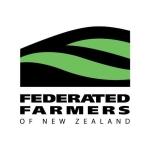No bees, no food, no people
As part of Bee Week 2011, Federated Farmers is highlighting the pollination activities of honey bees. Without this incredible insect, two thirds of the food we eat would be compromised, making life as we know it all but impossible.
“The outcome of poor governance and irresponsible actions relating to the honey bee could lead to economic and social collapse,” warns John Hartnell, Federated Farmers Bees spokesperson.
“One-third of the food humans eat can be directly attributed to the pollination activities of the honey bee as there’s no effective substitute pollinator. The bee is the most indispensible animal modern society depends upon.
“When you eat your main meal this evening, examine what’s on the plate. Literally, all of the colours on it, from avocados to turnips, are there as a result of honeybee pollination.
“What’s more, another third of the food we eat from the red meat sector is indirectly supported by the honey bee. Without the honey bee, no one will be rolling in clover because pasture not only needs the bee, soils need the nitrogen which pasture ‘fixes’.
“Bees activities contribute to nitrogen fixation in the pasture our livestock graze upon. This has been the farmer’s source of nitrogen in soils for well over a hundred years. It is more effective and much cheaper that applying nitrogen fertilisers to pasture.
“High country farmers in particular rely on this nitrogen source to support pasture life. Without the bee, high country farming would become extremely difficult, making it hard to farm merino affecting Icebreaker’s business as well.
“Then there is fruit. Whether its kiwifruit, apple, blueberry, cherry or pear, all are directly pollinated by the honey bee. Without the bee, we’d be dependent on fish, starch, grains and seaweed.
“In China, much of its pear industry relies on pollination by human hand, all because the irresponsible use of agricultural chemicals has made the land in that region toxic to the honey bee.
“Bees are an Industry Group within Federated Farmers because this mutual dependency is recognised by farmers. Take Frances Sydney (Syd) Fraser-Jones, who was recently conferred life membership of Federated Farmers Waikato after 57 years of service.
“Mr Fraser-Jones spoke of three important things to agriculture as ‘the bees, the bees and the bees – you’ve got to look after the bees.’ I think that says a lot about the level of understanding farmers have of this incredible insect,” Mr Hartnell concluded.
For Bee friendly planting ideas
Refer to Federated Farmers Trees for Bees by clicking here or by putting “trees for bees” into Google.
Being bee aware with sprays
There are some very simple rules when we look at agricultural sprays and irrigation and this is as applicable to lifestyle block farmers and councils, as it is to working farms:
§ If the crop is flowering and bees are flying and working the crop, don’t spray or irrigate
§ While a chemical may be said to be ‘bee friendly’, don’t take the risk. Often, the sticking agent mixed with the chemical is more dangerous to bees than the active product
§ When it comes to sprays and irrigation, spray between the hours of dusk until dawn when the bees have stopped flying. This is generally better than the day itself, with less wind and less spray drift.
§ Ensure any spraying contractor is fully briefed on your requirements. Deliberately flaunting these guidelines is a prosecutable offence and the prospects of a beekeeper accepting a contract to pollinate your crops in the future will be greatly diminished.
Being bee aware with irrigation
Water via irrigation is a major threat to bee life. The bee cannot live in a cold-wet environment and it will rapidly chill and die before returning to the hive:
§ Use common sense and irrigate in the evening and not during the day when bees are flying. This has the advantage of greater water retention for pasture and crops
§ If you want hives in a crop then ensure an irrigator can not drift across and literally take out the hives.
Being bee aware with hive location
Placing hives for good pollination is all about location, location, location:
§ Ensure hives are out of the travel path of any irrigator
§ Different crops have different requirements, for those crops the bees want to work, like white clover, they will fly some distance to seek pollen and nectar, so over the fence in a sheltered warm north facing site will do the job.
§ Some crops are a little less palatable for the honey bee, like kiwifruit, carrots and onions. In this instance placing the hives in the paddock or the orchard directly with the crop can enhance the pollination strike rate. Again common sense will prevail, the honey bee is a master pollen and nectar gatherer; show them the opportunity and they will get on with the job, weather permitting.
Being bee aware in the urban environment
Much of the advice above applies equally at home in the suburbs. Increasing pollination success in home gardens is to make it an inviting place for a bee to visit:
§ Use a mixture of bee friendly plants placed in your garden, which encourage bees to fly in and do their job of pollination.
§ Lavender in the vegetable plot or orchard is a great start and it will flower right through the pollination period.
§ Bee friendly gardening is just as important as bee friendly farming. Keep it simple, keep it safe.
